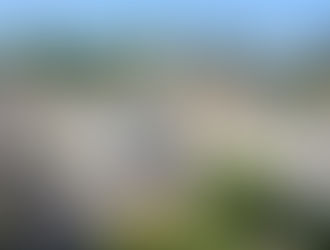CANYONS OF PUGLIA: discovering the Regional Natural Park "Terra delle Gravine"
- Paolo Casavola
- 10 mar 2014
- Tempo di lettura: 4 min
Puglia is a region always offering something different and often unique to visit, such as the Regional Natural Park “Terra delle Gravine” ( Land of Ravines) in the district of Taranto, which surprises tourists with a series of small canyons reminding of Arizona and its Grand Canyon.
The park spreads in the Ionian district of Taranto from Ginosa to Grottaglie, including several towns overlooking the ravines, such as Massafra, Mottola and Laterza, and it goes so far as to reach even the district of Bari (Gravina di Puglia) in the north and the district of Brindisi (Francavilla Fontana) in the south.
Ravines are erosions due to tectonic uplifts and they can be even 200 metre deep. During the centuries some emerged streams carved out and shaped the calcareous rocks, forming, thus, charming natural landscapes.
But not only… just the peculiarity and the characteristics of the region allowed the settlement of people from the Paleolith to the Middle Age: they utilized the stone faces and the natural caves to create real villages with houses, paths, shrines and churches which, up till now, represent an artistic-cultural evidence of an unequalled “stone civilization”.
This ideal journey leads you to discover and know not only the history and the great mind of man, but also the towns overlooking the ravines, they, too, rich in culture and charm, and the fauna living in this surprising area.
You can start from the widest ravine in the region which is also one of the largest in Europe, that is the “Gravina of Laterza”. It is 12 km. long, 400 m. large and up to 200 m. deep.
Its peculiar conformation let very interesting faunal and floral species survive, forming a sort of “island” where you can find woods of “Macedonian Oaks”, shrubs and plants such as the “Campanula Versicolor”, the “Tree Spurge”, the “Terebinth” and even wild orchids which, in spring, bloom and adorn the paths of the “gravina”.
The fauna of his area, too, is peculiar, with the presence of some species of birds at such a high extinction risk to be put among the areas named IBA (Important Bird Areas) and to obtain the status of “protected LIPU (Italian League for Bird Protection) oasis”. For those who are fond of bird-watching it will be a full immersion in the nature in search of species such as the Egyptian Vulture, the Lanner Falcon, the Peregrine Falcon, the Common Buzzard, the Hoopoe, the Blue Rock Thrush, the Eagle-Owl and even the rare Black Stork sighted in this area only recently. Moreover, the fauna of this region is not restricted to birds: this protected oasis houses also several species of mammals, such as foxes, beech martens, badgers and porcupines, or of reptiles such as European Rat-snakes(or Leopard Snakes) or Kotschy’s Geckos, which makes this area unique.
Before going on visiting other towns and ravines, it is better to stop and eat something, even quickly, choosing among very good cheeses and salted pork meats together with the very fragrant and crisp bread of Laterza.
After recovering your strengths, the tour goes on and, after crossing Castellaneta, Rodolfo Valentino’s town, you get to Mottola where you can discover many traces of the “stone civilization” which, since prehistory, exploited the walls of ravines to carry out settlements with houses, small streets and churches. Here, under Byzantine rule, the first monastic communities were set up inside caves consecrated to the Catholic faith and then they spread under the Norman rule, leaving us unique and historically and artistically invaluable evidences, such as the beautiful Byzantine frescoes inside the Crypt of San Nicola at Casalrotto.
Some kilometres far from the built-up areas of Mottola, it is possible to visit the stone village of Petruscio, a village dug in rock faces , plunged into the Mediterranean bush, where you can visit numerous caves linked by paths and stairs as well as some hypogeal churches containing frescoes made in different times from the 11th to the 14th century.
Going on with the tour to the discovery of ravines, you get to Massafra, a town dominated by the Norman Castle in the historical centre and overlooking one of the ravines surrounding it, that is the “gravina of San Marco”, which owes its name to the rocky church devoted to San Marco. This ravine is completely enclosed into the built-up area and it separates the new village from the historical one, linked by a bridge from where it is possible to admire the ravine itself.
The “gravina” connected to the town is the one of “Madonna della Scala”, characterized by the presence of the shrine of “Madonna della Scala” (18th century), reachable by means of 120 steps. Walking inside the “gravina” it will be possible to explore the ruins of the stone village and discover the numberless Byzantine crypts, among which the ones of the “Madonna Della Buona Nuova”, of the ”Candelora”, of “S.Leonardo”, of “Sant’Antonio Abate”, of “Santa Marina”, some of which dating back to the 12th century.
Together with these charming well as culturally and historically rich landscapes, the warmth and the hospitality of the locals and the typical products of this area, such as cheeses, wine, oil, make the visit much more attractive. Therefore, the last advice is to rest here, letting their good smells transport you, enjoying the typical dishes of local cooking in the several restaurants of these places!
Author: Paolo Casavola


































Commenti